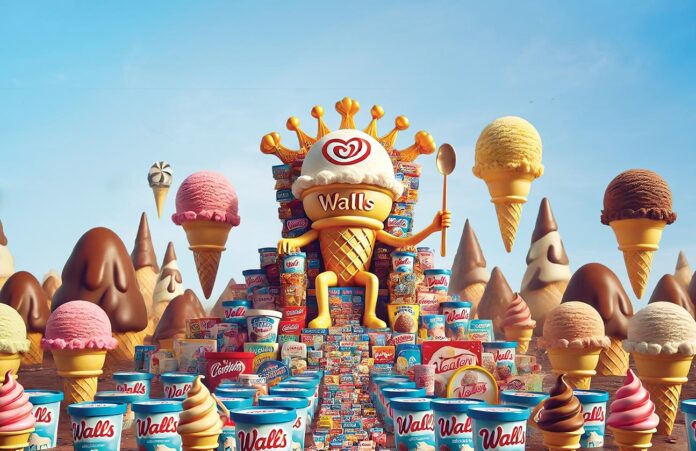In 2009, the streets of Lahore were hit by an orange storm. All over the city smartly dressed men in orange shirts and caps driving orange ice cream cycles were found in small caravans. riding across the city.
And that wasn’t all.
Television adverts, billboards, banners, flyers, lucky draws, and every manner of traditional marketing technique was loudly trying to sell Omore ice cream. On the surface it seemed nothing more than the launch of a new brand of marketing. But in the background was a struggle between a Pakistani conglomerate and an MNC. By launching Omore, Engro was looking to take on Unilever in Pakistan.
You see in 2009, Pakistan’s ice cream market was ruled entirely by Walls, which had been introduced into the country by Unilever nearly 15 years prior.
In the years since its arrival in Pakistan, Walls set out on an expansionary path in major Pakistani cities, absorbing their competition such as Polka and becoming the top dog in the sector. By the year 2000, their dominance was undisputed and unchallenged. The launch of Omore by Engro Foods was the first real competition anyone had threatened Unilever and Walls with. There was a feeling at the time that even though Walls could not be routed, they could be seriously hurt and brought down a notch or two.
That plan hasn’t quite played out. According to the latest data available for the ice cream sector, Walls continues to control a simple majority of retail sales in the ice cream sector. With a selection of different brands and types of ice cream, Walls leads with 53.4% of the overall retail market share which was worth over Rs 50 billion in sales in 2023. Omore is firmly placed in second place, but it isn’t a close second with 17.4% of share in overall market sales. There are other players too. Igloo is a leader in some small areas while Hico has made most of its business by selling tubs of ice cream particularly to restaurants, and while they thrive in this small niche, they are not a major player.
It is clear Walls has been a dominant force over the past thirty years. Not only has this brand of ice cream remained the leader in the ice cream market, it has also seen off some concentrated efforts to dethrone them. Omore has also not done badly for itself. While their initial strategy to get neck and neck with Walls hasn’t worked out, they have been biding their time with great patience maintaining the market share that they do have. Now, a very unique opportunity might be there for Omore to get a leg up. But first, let’s look at how we got here and what the state of the industry looks like. The content in this publication is expensive to produce. But unlike other journalistic outfits, business publications have to cover the very organizations that directly give them advertisements. Hence, this large source of revenue, which is the lifeblood of other media houses, is severely compromised on account of Profit’s no-compromise policy when it comes to our reporting. No wonder, Profit has lost multiple ad deals, worth tens of millions of rupees, due to stories that held big businesses to account. Hence, for our work to continue unfettered, it must be supported by discerning readers who know the value of quality business journalism, not just for the economy but for the society as a whole.To read the full article, subscribe and support independent business journalism in Pakistan


























The writer is unaware that Walls don’t sell Ice creams. They sell Frozen Desserts and especially mention that on their products. Using the word Ice Cream for Vegetable oil based Frozen Desserts is misleading. In fact Hico is the company that sells milk based ice creams in Pakistan.
Omore is not a 100% Pakistani brand
Shareholding pattern:
https://www.marketscreener.com/quote/stock/FRIESLANDCAMPINA-ENGRO-PA-10879055/company/
51% is owned by Royal FrieslandCampina, a Dutch cooperative.